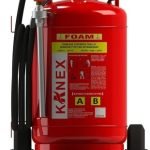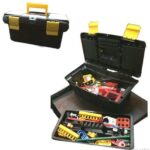Your list is empty, add products to the list to send a request
What is a Ravel Conventional Fire Panel?

11
Aug
Fire detection is one of the most critical aspects of building safety, and the Ravel fire panel is a trusted name in this field. If you’re setting up a conventional fire alarm system, a Ravel panel offers dependable performance, easy installation, and a cost-effective solution for various building types.
In this guide, you’ll learn exactly what a Ravel conventional fire panel is, how it works, its features, advantages, and how it differs from other systems. We’ll also cover maintenance tips, troubleshooting advice, and answer the most common questions people have about fire panels.
Understanding the Ravel Fire Panel
A Ravel conventional fire panel is the central control unit of a conventional fire alarm system. It monitors fire detection devices—like smoke detectors, heat detectors, and manual call points—connected in zones.
When any device in a zone detects a fire condition, the panel triggers alarms and displays which zone is affected.
The Ravel RE-9016 Conventional Fire Alarm Panel – 16 Zones is one example, designed to handle medium to large facilities, offering quick identification of the affected zone.
How the Ravel Fire Panel Works
- Device Connection – Detectors and call points are wired in zones.
- Signal Monitoring – The panel continuously checks for changes in device resistance, which may indicate smoke, heat, or manual activation.
- Alarm Activation – If a device in a zone triggers, the panel activates sirens or bells and shows the zone in alarm.
- Control Outputs – Can trigger auxiliary equipment like fire doors or sprinkler systems.
- Reset & Silence – After the event, the panel can be silenced and reset for normal monitoring.
Key Features of the Ravel Conventional Fire Panel
While features vary by model, common highlights include:
- Multiple Zones – Ranging from 2 to 32 zones for flexible coverage.
- LED Indication – Clear visual display of fire, fault, and system status.
- Sounder Circuits – Multiple outputs for audible and visual alarms.
- Battery Backup – Ensures operation during power outages.
- User-Friendly Interface – Simple controls for testing, silencing, and resetting.
- Compatibility – Works with a wide range of detectors and call points.
Where a Ravel Fire Panel is Used
Ravel fire panels are widely used in:
- Schools and colleges
- Office buildings
- Hospitals and healthcare facilities
- Hotels and resorts
- Warehouses and factories
- Retail outlets and malls
They are ideal for buildings where identifying the specific zone of the fire is sufficient, rather than pinpointing the exact device location.
Advantages of Choosing a Ravel Fire Panel
- Cost-Effective – Lower installation and maintenance costs compared to addressable systems.
- Simplicity – Easy to understand and operate.
- Reliability – Proven performance in diverse environments.
- Scalable – Available in different zone configurations to suit building size.
- Compliance – Meets fire safety standards for conventional alarm systems.
Ravel Fire Panel vs Addressable Fire Panel
While both systems serve the same core purpose—detecting fire—there are key differences:
| Feature | Conventional (Ravel) | Addressable |
| Detection | Identifies the zone in alarm | Pinpoints the exact device |
| Wiring | One circuit per zone | Loop wiring for multiple devices |
| Cost | Lower | Higher |
| Complexity | Simple | More complex to install/manage |
| Best For | Small to medium buildings | Large or high-risk facilities |
Maintenance Tips for a Ravel Fire Panel
Keeping your panel in top condition ensures it works when you need it most.
- Monthly Checks – Test at least one zone and sounder circuit.
- Quarterly Inspections – Check batteries, wiring, and indicator lights.
- Annual Testing – Inspect all zones and devices.
- Prompt Repairs – Fix faults immediately to avoid downtime.
- Log Everything – Keep a written or digital maintenance log for compliance.
Common Problems and Troubleshooting
Problem: Panel shows “Fault” but no alarm
Solution: Check wiring continuity, battery voltage, and device connections.
Problem: Alarm not sounding during test
Solution: Inspect sounder circuits, fuses, and settings.
Problem: Frequent false alarms
Solution: Clean detectors and ensure devices are not exposed to dust or steam.
Frequently Asked Questions
1. What is a conventional fire panel?
A conventional fire panel is a control unit that monitors zones of fire detection devices. When a device in a zone activates, the panel alerts users and identifies the zone in alarm.
2. What are the two types of fire panels?
The two main types are:
- Conventional Fire Panels – Identify zones in alarm
- Addressable Fire Panels – Identify the exact device location
3. What is the difference between addressable and conventional panels?
A conventional panel identifies which zone is in alarm, while an addressable panel pinpoints the specific device. Addressable systems offer more detailed information but are more expensive and complex.
Final Thoughts & Call to Action
A Ravel fire panel is a practical, reliable, and cost-effective choice for many buildings. It’s straightforward to operate, easy to maintain, and compliant with fire safety standards—making it ideal for small to medium facilities where zoning is sufficient for fire detection.
If you’re looking for a robust option, the Ravel RE-9016 Conventional Fire Alarm Panel – 16 Zones offers exceptional performance and flexibility.
Explore our full range of Ravel fire panels and get expert advice on choosing the right one for your building’s safety needs.
Protect lives. Protect property. Choose Ravel.



























